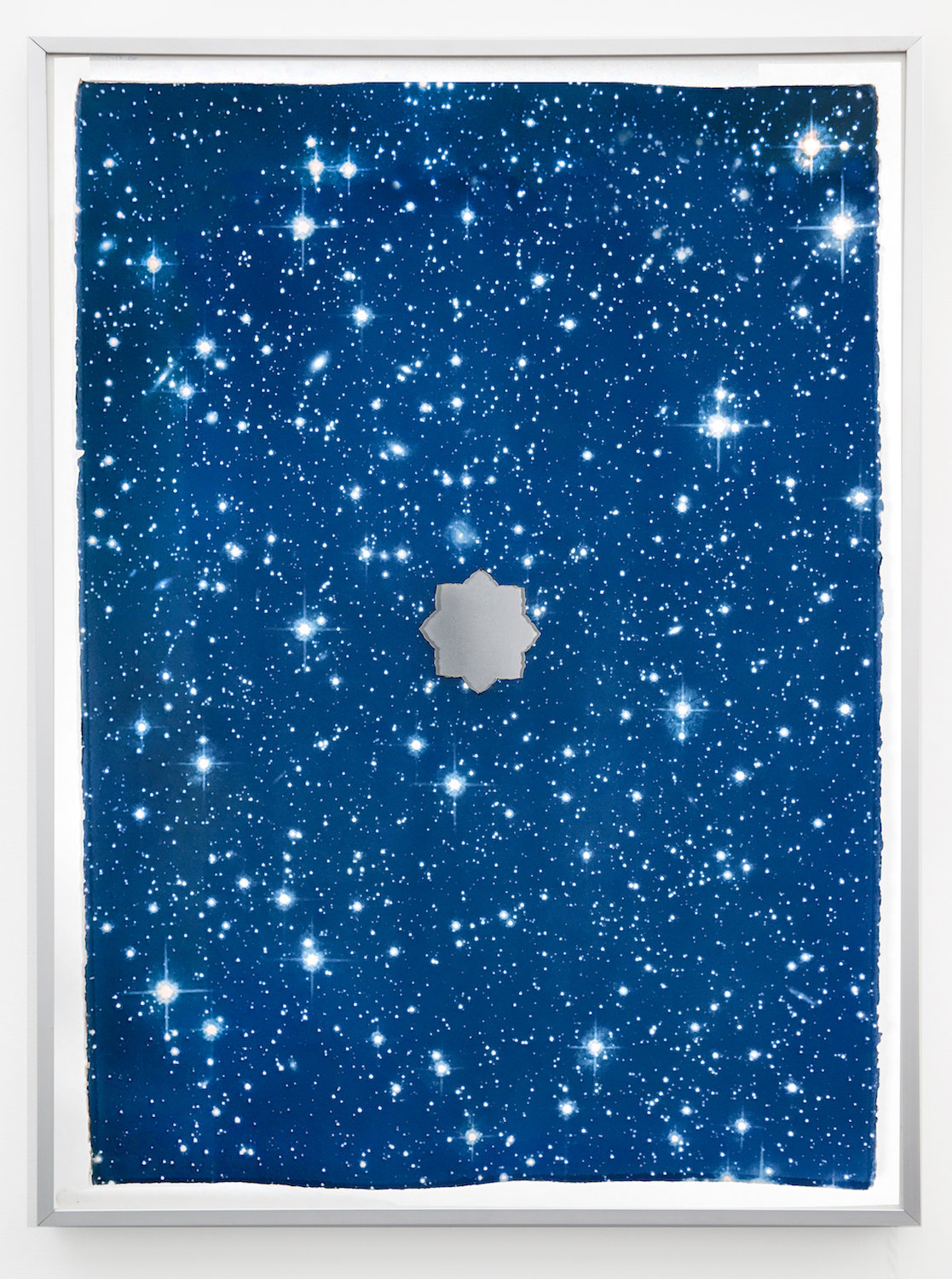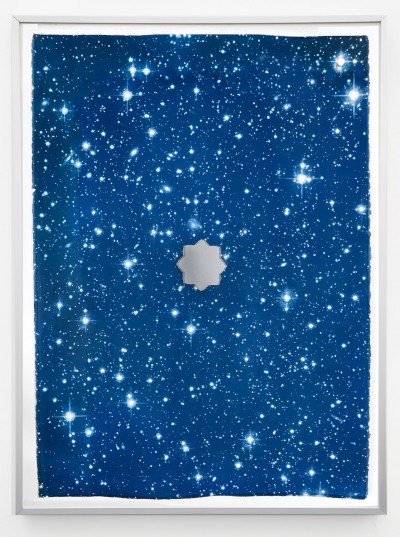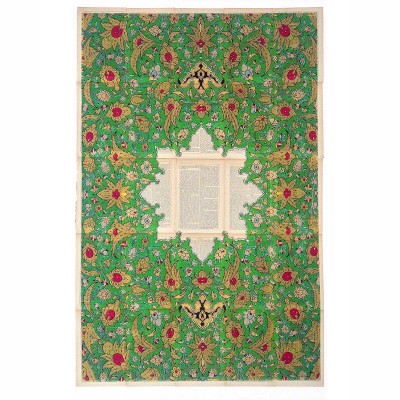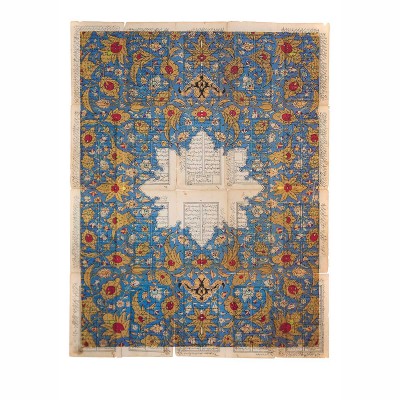Equation of Time
Ala Ebtekar
2017
30 x 22.5 inches
Cyanotype with die cut and silver leaf
Edition of 19
DOWNLOAD CATALOG
INQUIRE
Equation Of Time is a suite of twenty Cyanotype prints, simultaneously exposed by the light of the sun on the gallery rooftop on April 15th, 2017. We will present an installation of the completed prints as well as a film documenting the making of this unique project.
Star gazing, craning our necks to the heavens, is the original source of wonder. This awestruck observation is at the root of this print project. Astronomer John Herschel—noted for coining the term “photography”—invented the cyanotype process in 1839. It is synchronistic that Ebtekar chose the Cyanotype process for this project as imagery for this print was culled from the NASA archive.
Equation Of Time employs a conceit of poetic simplicity: An image of the cosmos / Brought to life by the light of the cosmos / The very thing it describes. The NASA image of the night sky, printed as a negative, was paired and exposed over 24x36 inch sheets by the light of the sun. The Cyanotype process is light absorbed into emulsion on paper afterwhich the image is revealed. At the center of each cyanotype print the artist has cut an intricate void in the shape of a Persian window, under which a shimmering silver leaf is inserted to reflect light outward. The print, at once, infinitely absorbs light and reflects it back out.
The phrase "equation of time" is widely used to describe the difference between solar time and mechanical time. The daily rotation of the Earth is irregular and the small differences in the length of day, build up to produce longer differences between the two modes of timekeeping. Prior to the invention of mechanical clocks in the mid-17th century, sundials were the only reliable and generally accepted, standard timepieces. The sundial functions around the idea that when the sun reaches it’s highest point (meridian), it is noon, and when the sun crosses the meridian again the following day, it is noon, again. Mechanical Time functions around the idea that each day is 24 hours long, a notion that is not actually true.
There are only four dates during a calendar year when solar time and mechanical time align. April 15th—the date these Cyanotype prints were produced—is one of these significant dates in astronomy.



